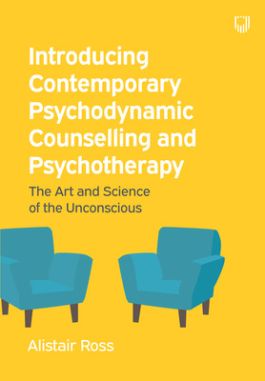Introducing Contemporary Psychodynamic Counselling and Psychotherapy: the Art and Science of the Unconscious
1st Edición
0335226833
·
9780335226832
© 2019 | Published: June 7, 2019
PRODUCTO DIGITAL EBOOK. NO ES UN PRODUCTO FÍSICO.
Gracias este es un libro electrónico o EBOOK, para poder utilizarlo debes de crear una cuenta en VitalSource Bookshelf esta es una Aplicación Gratis. Una vez que has creado tu cuenta, dentro de la plataforma debes de redimir los distintos códigos que hayas adquirido para poder leer tus libros.- Ingresa a tu libro desde cualquier lugar o dispositivo, con acceso a internet o sin acceso.
- Crear notas, y apuntes en tus lecturas.
- Puedes realizar búsquedas a los conceptos que necesites de manera rápida y fácil.
- Ingresa a tu libro desde cualquier lugar o dispositivo, con acceso a internet o sin acceso.
- Crear notas, y apuntes en tus lecturas.
- Puedes realizar búsquedas a los conceptos que necesites de manera rápida y fácil.
PART ONE: Setting the scene
1. Introduction – The meaning of psychodynamic theory in therapy
2. Understanding the past – How did we get here?
3. Understanding the present – The role of research
4. Encountering the new – Meeting a dancing landscape
PART TWO: Meeting the unconscious
5. Who owns the unconscious?
6. The evolving unconscious
7. The implicit unconscious
PART THREE: How we develop
8. The infant unconscious – Oedipus, bad breasts, lines and stages
9. Learning from babies – Attachment, the interpersonal self and infant research
10. Learning from our brains – Infant development and neuroscience
11. Learning about sexuality, gender and identity
PART FOUR: Clinical perspectives
12. When life goes wrong – Introducing psychopathology and trauma
13. Foundational skills for practice
14. Developing skills for practice
15. Therapeutic engagement and the process of change
1. Introduction – The meaning of psychodynamic theory in therapy
2. Understanding the past – How did we get here?
3. Understanding the present – The role of research
4. Encountering the new – Meeting a dancing landscape
PART TWO: Meeting the unconscious
5. Who owns the unconscious?
6. The evolving unconscious
7. The implicit unconscious
PART THREE: How we develop
8. The infant unconscious – Oedipus, bad breasts, lines and stages
9. Learning from babies – Attachment, the interpersonal self and infant research
10. Learning from our brains – Infant development and neuroscience
11. Learning about sexuality, gender and identity
PART FOUR: Clinical perspectives
12. When life goes wrong – Introducing psychopathology and trauma
13. Foundational skills for practice
14. Developing skills for practice
15. Therapeutic engagement and the process of change

